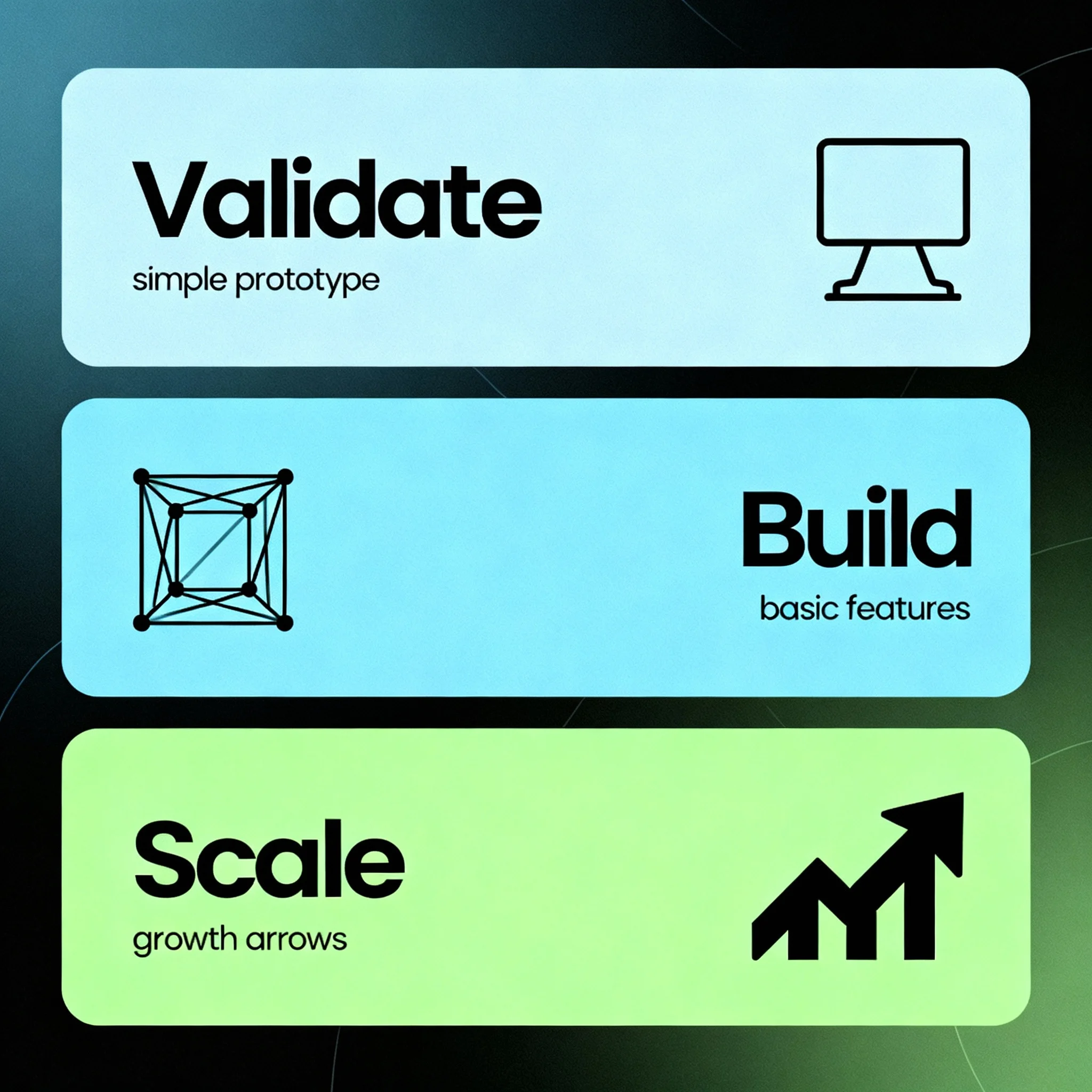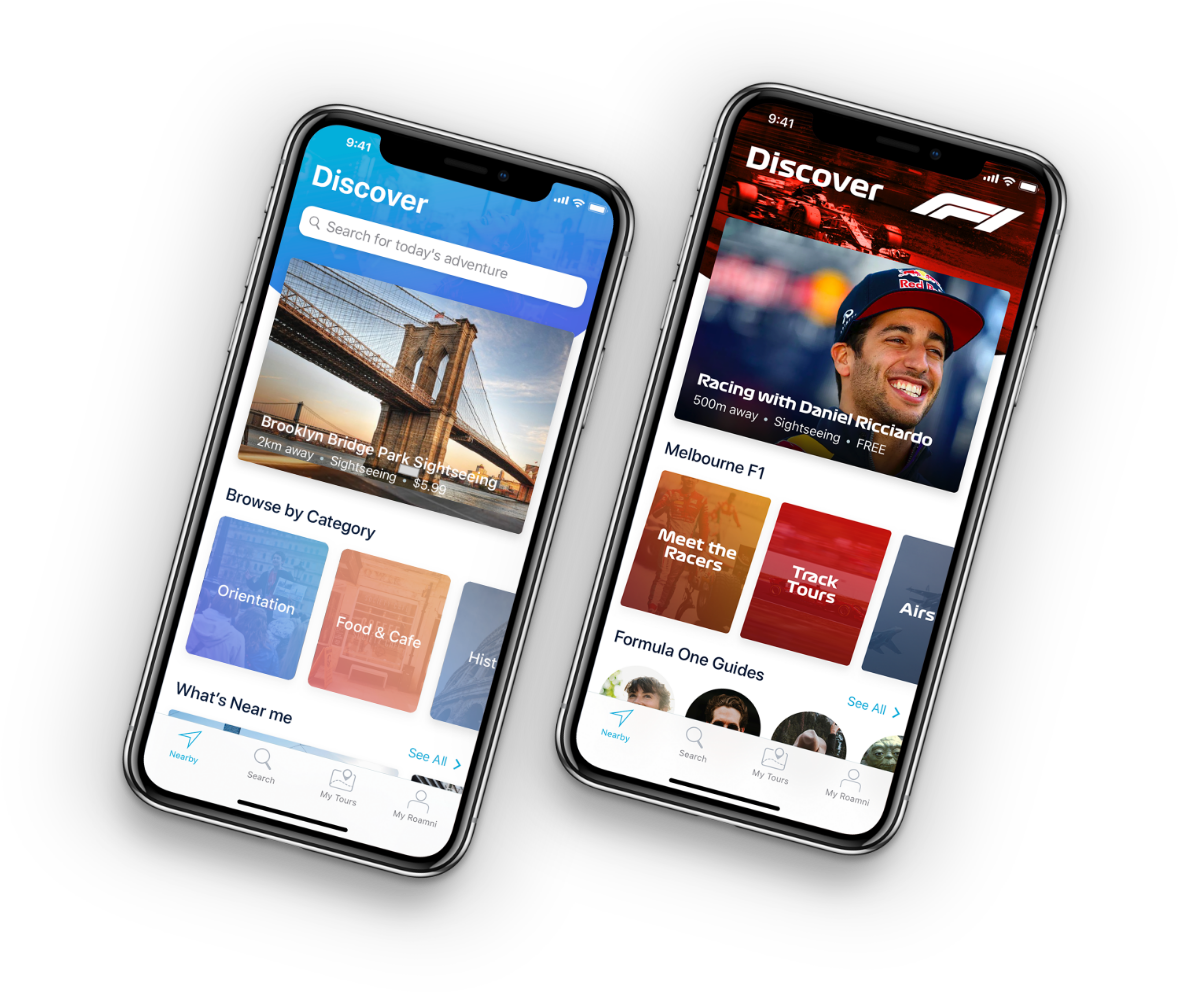The Lean Truth About App Development for Startups: Why Your MVP Strategy Determines Everything

You’ve just watched another startup burn through $500K building the “perfect” app, only to discover nobody actually wanted half the features they built. Meanwhile, down the street, a founder launched their food delivery app with just three core features and is already processing 1,000 orders daily.
The difference?
It’s not luck.
Here’s my take: The successful founder understood that app development for startups isn’t about building everything. It’s about building the right thing at the right time.
Simple. Focused. Lean.
After working with hundreds of startup founders at Appetiser Apps and watching our team ship successful apps across both Android and iOS platforms, I’ve learned that your first 90 days determine whether you’ll join the 90% of startups that fail or the 10% that actually generate recurring revenue.
- Start with the uncomfortable truth: Your app idea isn’t special (yet)
- The MVP framework that actually works: Validate, build, scale
- Choosing your development path: Native vs cross-platform reality check
- Building your development team: The make-or-break decision
- Launch strategy: Your first 1,000 users matter most
- Learning from failure: What successful apps did differently
- The post-launch reality: Iteration is everything
Start with the uncomfortable truth: Your app idea isn’t special (yet)

Source: Perplexity
Let me share something our Head of Delivery, Maku Montecer, told me in an interview that stopped me in my tracks:
There’s no such thing as a perfect app. There will always be issues, things that break, and odd things that users encounter. But as long as you protect your core concept and ensure that what you want to test works, that’s what matters.
This mindset shift?
Your initial app idea, whether it’s “revolutionizing” food ordering apps or creating the next Uber competitor, needs validation, not perfection.
The mobile app market is brutally honest. Millions of mobile apps compete for attention. They flood the Apple App Store and Google Play Store with promises and features. But here’s the brutal reality: Your competitive advantage isn’t having the most features.
It’s having the right ones.
The ones that actually solve problems.
The MVP framework that actually works: Validate, build, scale

Image credit: Perplexity
Successful startup mobile app development follows a counterintuitive pattern. Instead of starting with advanced features and artificial intelligence integrations, the best app development company approaches starts with embarrassingly simple solutions.
Phase 1: Problem validation through market research
Stop. Before writing code. Before hiring developers. Before everything.
Conduct market research that goes beyond Google searches. Our Product Manager Brian Wong emphasizes this approach:
You have to define clear objectives and be able to prioritize features. When developing user stories and your roadmap in general, you need to identify any dependencies that might exist.
This means getting your hands dirty. Listen. Listen. Listen. Where? On Reddit communities. Facebook groups. Anywhere your target audience vents about existing apps. When we helped develop successful food delivery apps, we discovered something surprising: users didn’t want more features. They wanted two things: faster checkout and real-time GPS tracking that actually worked.
This necessitates a hands-on approach. Active listening is crucial. Engage with communities on platforms such as Reddit and Facebook groups, or any forum where your target audience expresses concerns regarding existing applications.
When assisting in the development of successful food delivery applications, a surprising insight emerged: users did not desire additional features. Instead, their primary requirements were expedited checkout processes and reliable real-time GPS tracking.
That’s it.
Phase 2: Feature prioritization using the MoSCoW method
Your minimum viable product should include:
- Must-haves: Prioritize core features that deliver your key value (like push notifications for order updates)
- Should-haves: Features that enhance the experience (in-app messaging for customer support)
- Could-haves: Nice additions for later (loyalty programs, social media integration)
- Won’t-haves: Features to explicitly exclude from MVP
Choosing your development path: Native vs cross-platform reality check
Here’s where startup founders often stumble.
The app development process isn’t just about choosing between web apps and mobile apps; it’s about understanding the real trade-offs.
Our iOS developer Adonis Dumadapat puts it bluntly:
A lot of startups want to maximize their funding. Many people take the high-speed approach—developing once and compiling it into both Android and iOS. Yes, you save some money upfront, but in the end, you’ll definitely encounter problems.
The cross-platform development trap
React Native and other cross-platform development frameworks promise to save time and reduce app development costs.
For a basic app with standard features, they deliver. But when your food delivery application needs to work seamlessly with payment gateways and deliver food tracking in real-time? That’s when the cracks show.
Consider your tech stack carefully. Your technology stack should align with your business model, not the other way around.
If you’re building something that needs native performance, like apps handling in-app purchases or complex user interface animations, going native from day one saves money long-term.
The hidden costs nobody talks about: Beyond app development
The development cost?
Just the beginning.
Successful app development for startups requires budgeting for immediate costs, such as app store optimization to compete in search results.
Quality assurance testing across multiple mobile devices. Developer accounts for both Google Play and Apple’s ecosystem. These add up fast.
Then come the ongoing investments. Post-launch support and bug fixes eat into budgets.
User feedback implementation never stops. Server costs balloon as you scale. Marketing to acquire users becomes your biggest expense.
So, plan accordingly.
Building your development team: The make-or-break decision
Whether you’re working with mobile app developers individually or partnering with a mobile app development company, your development team determines your success rate.
Calvin Cica, one of our Product Designers, shared this insight about how to trust the process itself:
Trust your designers! Great design is key to making your product a reality and success.
But here’s what most startup app developers won’t tell you: The best development partner isn’t the cheapest or even the most technically skilled. It’s the one who pushes back on your ideas when needed.
Red flags when choosing app developers
- 🚩. They promise to build everything in your first version
- 🚩 No questions about your user research or business model
- 🚩 Unwilling to start with an MVP approach
- 🚩 Can’t show similar successful apps they’ve built
- 🚩 No clear quality assurance process
The lean build process: Ship fast, learn faster
The mobile app development process shouldn’t take twelve months. If you’re spending that long on version one, you’re building too much.
This means:
- Build core features first (2-4 weeks)
- Internal testing with your team (1 week)
- Beta testing with real users (2-3 weeks)
- Iterate based on user feedback (ongoing)
- App launches when you have product-market fit
These are lean estimates, of course, depending on the complexity of your app, these can be adjusted.
For food ordering, this might mean launching with just menu browsing, cart management, and payments. Skip the loyalty program, user profiles, and social features initially. You can add features once you validate market demand.
Launch strategy: Your first 1,000 users matter most
Discovery happens through app store optimization. Survival? That’s determined by user ratings.
Focus intensely. Deliver exceptional experiences to early adopters. Transform them into advocates. Brian Wong’s advice on user acquisition resonates here:
Social media is probably the most powerful tool at the moment in acquiring app users. All you need is time and creativity, and you’ll be able to launch successful campaigns practically free.
Brian Wong, Product Manager
Your launch strategy should prioritize local restaurants or local businesses as initial partners.
Build customer loyalty through consistent delivery. Gather customer satisfaction metrics obsessively. Create user-friendly interfaces so intuitive that even non-tech-savvy business owners understand them immediately.
Small wins compound into momentum.
Learning from failure: What successful apps did differently
Instagram started as Burbn. Cluttered. Confusing. A check-in app nobody understood.
They stripped everything except photo sharing.
Uber? They began serving only luxury rides in San Francisco. That’s it. These successful apps understood something crucial: Your first version is about learning, not earning.
The difference between apps that make it and those that don’t isn’t the idea; it’s the iteration speed.
Failed startups spent months perfecting features nobody wanted. Successful ones? They launched imperfect but functional MVPs. They listened. They improved. They scaled.
The post-launch reality: Iteration is everything
Here’s where the real work begins. Post-launch support isn’t just about fixing bugs; it’s about rapid iteration based on user feedback.
Track these metrics religiously:
- User retention after 1, 7, and 30 days
- Which features get used most
- Where users drop off
- Customer app reviews and specific complaints
Use this data to make informed decisions about your next features. Maybe your restaurant app needs better push notifications for order status. Perhaps your delivery app requires more robust real-time tracking.
Let data, not assumptions, drive your roadmap.
Your next move: From idea to launch
The path from startup business idea to successful app isn’t linear. But it is learnable.
Are you building the next game-changing food delivery services platform? Solving a completely different problem? Doesn’t matter. The principles remain constant: Start small. Validate quickly. Iterate constantly.
My two cents?
Stop overthinking and start building.
Those mobile app development challenges keeping you up at night? They’re probably not the ones you’ll actually face. The real challenge is getting your first version into users’ hands quickly enough to learn what they actually need. Speed beats perfection. Every time.
At Appetiser Apps, we’ve guided hundreds of startup founders through this exact journey. From just the idea to apps generating recurring revenue. Our Baseplate™ technology cuts development time by 40%.
Remember what Maku said: “Just go for it. You need to start somewhere because if you don’t start, you’ll never finish.”
The mobile app market won’t wait for your perfect app.
But it will reward your perfectly-timed MVP.
Ready to transform your startup app idea into reality? Let’s build something that matters–starting with what matters most. Book a free consultation with one of our product strategists and let’s talk about your dream project.

Maria Krisette Lim is a Content Marketing Specialist with 14 years of experience producing web and print ad content. Krisette has a BSBA degree, major in Business Management and Entrepreneurship. When she’s not tinkering with words and punctuation, she’s either curled up with a book while sipping hot tea, playing with her toddler, or tinkering with website builders.


